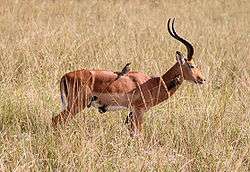Naturalistic observation
Naturalistic observation is, in contrast to analog observation, a research tool in which a subject is observed in its natural habitat without any manipulation by the observer.[1][2] During naturalistic observation, researchers take great care to avoid interfering with the behavior they are observing by using unobtrusive methods.[3] Naturalistic observation involves two main differences that set it apart from other forms of data gathering. In the context of a naturalistic observation the environment is in no way being manipulated by the observer nor was it created by the observer.[3]

Naturalistic observation, as a research tool, comes with both advantages and disadvantages that impact its application. By merely observing at a given instance without any manipulation in its natural context, it makes the behaviors exhibited more credible because they are occurring in a real, typical scenario as opposed to an artificial one generated within a lab.[3] Naturalistic observation also allows for study of events that are deemed unethical to study via experimental models, such as the impact of high school shootings on students attending the high school.[3] Naturalistic observation is used in many techniques, from watching an animals eating patterns in the forest to observing the behavior of students in a school setting.[4]
See also
References
- ↑ Cherry, Kendra. "What Is Naturalistic Observation?". About.com. Retrieved 15 May 2011.
- ↑ "Psychology 202Q Lab: Naturalistic Observation" (PDF). University of Connecticut. Retrieved 15 May 2011.
- 1 2 3 4 "Naturalistic Observation" (PDF). radford.edu. Retrieved 15 May 2011.
- ↑ "Naturalistic Observation". peace.saumag.edu. Retrieved 2016-04-15.